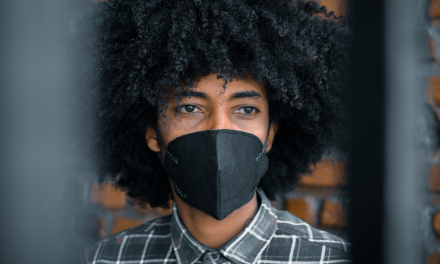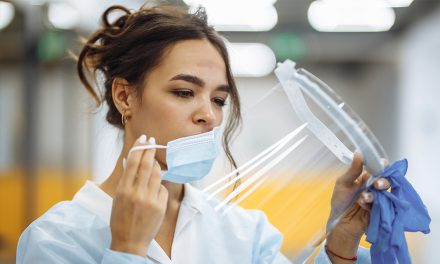Will you get the COVID-19 vaccine when one becomes available to the public? For most Black people, the answer is a resounding no, according to a recent Pew Internet Research Study. Just 32% of Black adults say they would definitely or probably get a COVID-19 vaccine. This is compared with 52% of white adults, 56% of Latinos, and nearly 72% of Asians. Black respondents cited vaccine safety and effectiveness, and pace of approval process as reasons for concern.
Black people have contracted the coronavirus at more than two times the rate of whites. As the nation surpasses more than 250,000 coronavirus deaths, Black people make up nearly 20% of the dead (where race is known). According to the COVID-19 Tracking Project, 45,914 Black people have died due to complications from the coronavirus.
Well-earned Distrust
To be clear, the lack of trust in this vaccine is coalesced with a deep-rooted, systemic history of hijacked black bodies, by the medical community, for experimentational purposes that began centuries ago.
During the Antebellum period, Black bodies were forcibly dissected and subject to examinations. Slaves who escaped the plantation were thought to suffer from a mental disease which prompted them to flee. Limbs were removed to remedy the so-called ailment. And perhaps the most notable, the Tuskegee Syphilis Study (aka the Tuskegee Experiment), tricked 600 Black men from Macon, Alabama, into an experiment that injected them with syphilis to observe the disease, untreated, in Black population. The “study” spanned 40 years, with many never receiving treatment.
Not long ago, news broke of 19 immigrant women in a Georgia ICE detention center who said they were forced or pressured to have hysterectomies. Most were Black and Latina. “As shocking as that is, that’s actually a more common, everyday kind of health experience for immigrants, and for people whose primary language is not English,” said Erica Andrade, chief program officer of El Centro. Andrade served as one of several panelists during Kansas City, Missouri-based Health Forward Foundation’s (HFF) Vaccine Equity: Building Trust Among Communities of Color in the COVID-19 Era, hosted by HFF CEO Qiana Thomason.
Andrade said through her nonprofit work at El Centro they sometimes host mobile health events that offer mammograms, Pap smears, and other preventive wellness screenings that uncovered just how prevalent this practice is.
“It was shocking to me to see how many women were coming in for a Pap smear who no longer had a uterus because it had already been removed and they were not aware,” she said. “The way you build trust is by building a health care system that is inclusive and treats patients with equity from beginning to end. You can’t have a health care system that refuses services to individuals because they don’t have insurance or because they don’t have proper documentation and then expect them to trust you when you want them to come get vaccinated.”
The Pfizer and Moderna Vaccines
There’s much work ahead to gain the trust of communities of color before the COVID-19 vaccine gets into enough arms to gain traction. Understanding how these vaccines are composed and how they work is one of many first steps.
New York-based Pfizer and Germany-based partner, BioNtech, were the first to submit an Emergency Use Authorization (EUA) request to the Federal Drug Administration (FDA) for the COVID-19 vaccine. Massachusetts-based biotechnology firm Moderna is not far behind. Based on clinical trials, Pfizer said its two-dose vaccine’s effective rate is 95%, Moderna’s is 94.5%. Much like Pfizer, to glean this efficacy rate, Moderna administered placebos (saline shots) to 15,000 of its clinical trial participants and administered the actual vaccine to another of its 15,000 participants.
Ninety-five people contracted the coronavirus, of which 90 were from the placebo group, and five from the group who received the vaccine. There were 11 severe cases of COVID-19 from the placebo group.
Both vaccines target individuals 18 years and older, and use a technology called messenger RNA or mRNA. On PBS’s Amanpour & Company, Noubar Afeyan, Moderna co-founder and chairman, described mRNA as a brand-new technology. However, the leg work began about a decade ago to see if a molecule could be created – based on messenger RNA, that would allow a person who received this molecule to use their own body and own cells to manufacture a protein to protect the body against a particular disease. Afeyan said that protein could be a drug, or in the case of Pfizer and Moderna, a vaccine that will “train” the immune system.
Specifically, Afeyan said mRNA works as a vaccine composed of a molecule that genetically codes for spike protein (the spikes seen in the coronavirus illustrations). When this genetic code is administered, the body reads the code (the mRNA) and uses its immune system to make spike protein. In the case of mRNA vaccines, the body is not injected with the virus, which is how most other vaccines work. Instead, the spike protein, gleaned from the injected genetic code or mRNA, informs the immune system that something foreign is detected. The immune system gets “trained and then stands on guard for when the virus does show up,” Afeyan said. “And now, the immune system is ready to attack the virus, like the other vaccines, and prevent it from being able to infect or certainly infect in a serious way.”
Clinical Trials Include Diverse Subgroups and Notable Contrasts
Both Pfizer and Moderna clinical trials included participation from diverse subgroups. Of Pfizers’s 41,135 U.S. participants who received the second dose, 10.1% are Black, 13.1% are Hispanic, 5.5% Asian, with only 1% Native American. U.S. adults ages 56 to 85 made up 45.4%. Generally, Black people have a 5%, or less, representation in clinical trials, which are sometimes referred to as ivory towers because of lack of representation by people of color.
As for Moderna’s clinical trial, of the 30,000 participants, 10% are Black, 20% Hispanic, and more than 8,000 participants are individuals living with chronic conditions. A quarter of participants are adults age 65 years and older.
Notable contrasts include Pfizer’s requirement of two injections 21 days a part, compared with Moderna’s requirement of two injections four weeks apart. Pfizer’s storage rate requirement is -75C for up to 15 days (with proper use of dry ice) which could pose usability issues for hard-to-reach communities. However, Moderna’s storage requirement is -20C for up to six months, a temperature common to most home refrigerator freezers, and widely used among pharmacists and doctor’s offices.
Neither Pfizer nor Moderna reported major side effects resulting from the two-dose administration, and neither trial included children or pregnant women. The FDA is slated to render its decision on Pfizer’s EUA request on Dec. 10, 2020. If approved, the vaccine could be available to health professionals and other higher prioritized groups before Christmas. Moderna submitted its EUA request on November 30, 2020.
As for the speed of creating these vaccines, pharmaceutical companies underscore they’ve worked closely with regulatory agencies, while providing near real-time clinical trial data. However, that may not be enough to disarm the public’s skepticism and reticence toward these vaccines.
Building Trust Requires Unadulterated Equity
Daphne Bascom, M.D., vice president of population health at St. Luke’s Health System in Kansas City, another of HFF’s Vaccine Equity panelists, said when it comes to building trust among people of color, engagement should be authentic. This requires listening to their fears and addressing them appropriately. Dr. Bascom also recommends engaging trusted community stakeholders and equipping them with resources to disseminate culturally appropriate information. This could include venues like physician’s offices, churches, and barber shops. “We must meet people where they are,” she said. “We need to apply resources to ensure there is competency and literacy for those who are already in the community to help us deliver those messages. Otherwise, people are filtering things on social media and filtering things on television. It’s hard to know what’s truth.”
Dr. Bascom also stressed the importance of managing expectations. “We can’t set up expectations that this is going to be 100% effective. We can’t set up expectations that we know all of the complications. So there has to be a level of transparency,” she said.
Andrade said equity also includes breaking language barriers. Health systems must have people who can interpret for patients, instead of relying on family members or even children to do that for them. Health literacy is also key. On top of that, health care providers must also provide patients a safe place to ask questions and arrive at a place of understanding, even if that process takes time.
Alonzo Plough, Ph.D, M.P.H., chief science officer and vice president of research, evaluation, and learning at the Robert Wood Johnson Foundation added another layer to the panelists’ discussions. He said vaccine development is a science thing, and community vaccinations are social, political, economic, and trust things. “We have to work on both of those,” he said. “The trial is the science piece, and it needs to have the proper representation of the population who will receive the vaccine. But the real challenge is the other piece. Health happens when the trust happens and you’re able to develop the right kind of messaging trust to actually get the shot in the arm. So, we need to be talking about engagement both on the trial side, but also engagement on the trust-building community interface side.”
Missouri’s COVID-19 Vaccine Distribution Plan
Missouri’s COVID-19 vaccine distribution plan is split into three phases. Phase 1A includes health care workers and those working in long-term care facilities will be among the first to be vaccinated. According to the plan, rural communities will not be included in this initial phase due to Pfizer’s storage limitations. Phase 1B includes essential workers who can’t socially distance at work. This includes emergency responders, teachers, as well as people who are most vulnerable, like adults over the age of 65. Kansas’s distribution plan prioritizes health care workers and long-term care residents, much like Missouri’s.
The third phase includes all Missourians who want the vaccine, but it will not be available until 2021. Keep in mind, trial participants who have taken both doses of the vaccine have only been monitored for a couple of months. The time it takes for broad access to the vaccine will offer more time for critical observations to see if there is a lull in the presentation of side effects after the second dose. This may support increased trust if minimal adverse effects present after both doses have been administered to the general public, which will comprise a larger swath than the clinical trials.
“So far the data safety monitoring committee has not seen any significant reason for concern in this trial as far as safety,” said Moderna’s Chief Medical Officer Tal Zaks, M.D., Ph.D in a recent CNN interview. “We do see reactogenicity – those flu-like symptoms, particularly after the second dose. Some people will feel some mild to moderate discomfort, and about 1 in 10 will feel what is considered to be severe, significant discomfort that may prevent them from their usual activities of daily living. These are [all] transient, they’re expected, it’s what we call flu-like symptoms, and for me, they bear a strong correlation with having a very effective vaccine.”








